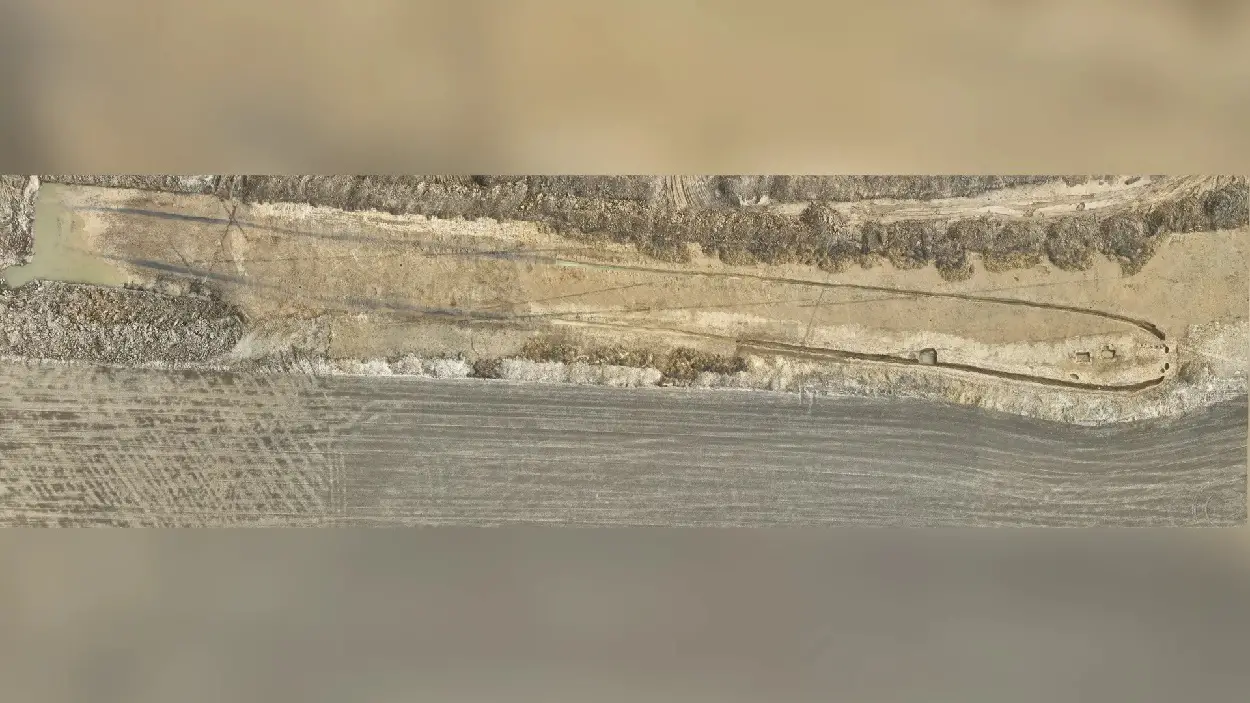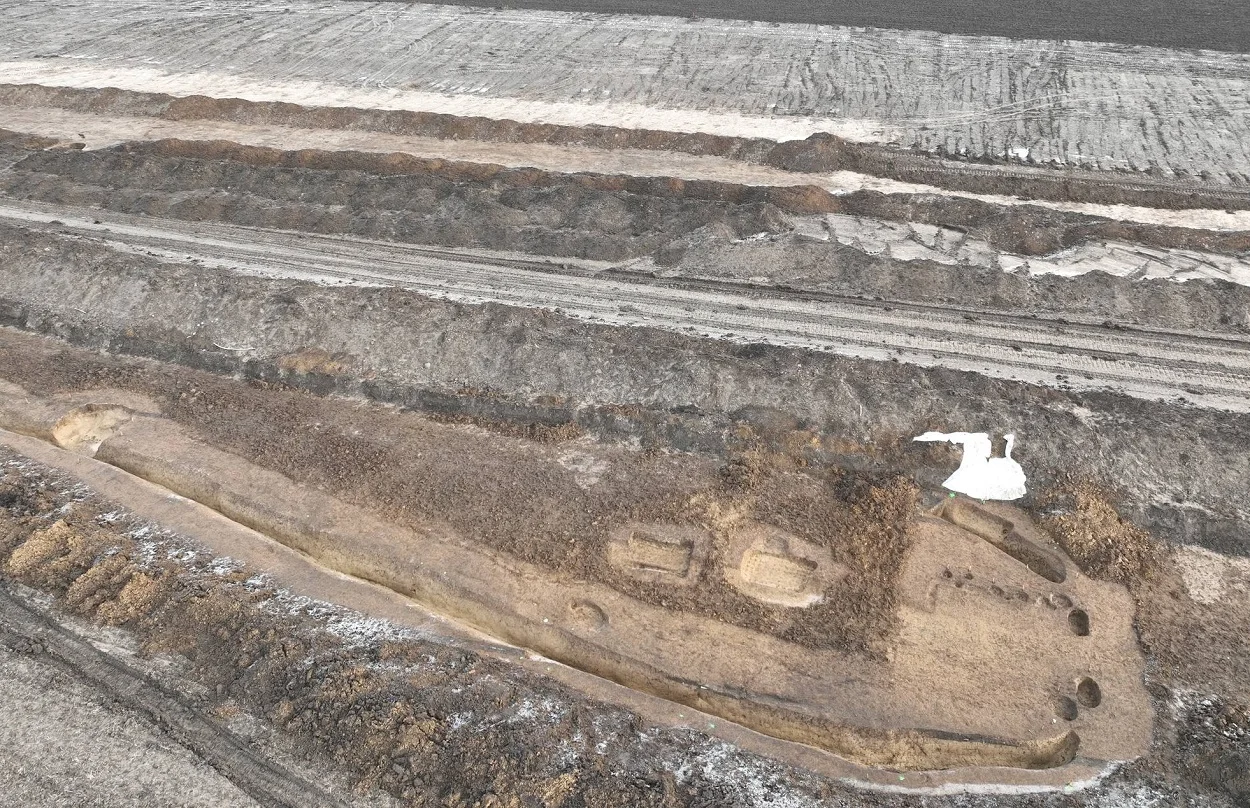Archaeologists from the University of Hradec Králové have discovered a giant mound structure during preliminary archaeological investigations along the route of the D35 Plotiště-Sadová highway in Czechia.
Excavations revealed an “elongated trapezoidal gutter,” a typical feature of long barrows, measuring 190 meters in length. According to the researchers, this discovery is the longest monument of its type known in Europe.
Estimates date the monument to the Chalcolithic, a period that saw the transition between the Neolithic and Bronze Age, identified by an increase in the use of smelted copper.

According to the researchers, the monument is likely associated with the Funnel(-neck-)beaker culture, in short TRB or TBK (3800-3350 BC), named for their ceramics, beakers and amphorae with funnel-shaped tops.
In the context of the Kurgan hypothesis (or steppe hypothesis), the culture is seen as non-Indo-European, representing a culture of Neolithic origin, as opposed to the Indo-European-language-speaking peoples who later intruded from the east.
The mound itself has been completely ploughed out due to agricultural activity, however, excavations have determined that the mount is 15.1 metres wide and is orientated in the north-east-southwest direction.
According to a press statement by the University of Hradec Králové: “In addition to the perimeter trench, we also managed to find the entrance to the mound, which is preserved in the form of post holes and a trench.”
The researchers also discovered 29 burials associated with the mound. Two of these burials are located in the central area and have skeletal remains placed on their left side facing in a northwards direction.
Several objects placed as offerings were uncovered during the study of the monument near the central burials. This includes ceramic fragments, four flint arrowheads, and a flint blade.
Header Image Credit : Department of Archeology FF UHK
Sources : University of Hradec Králové





